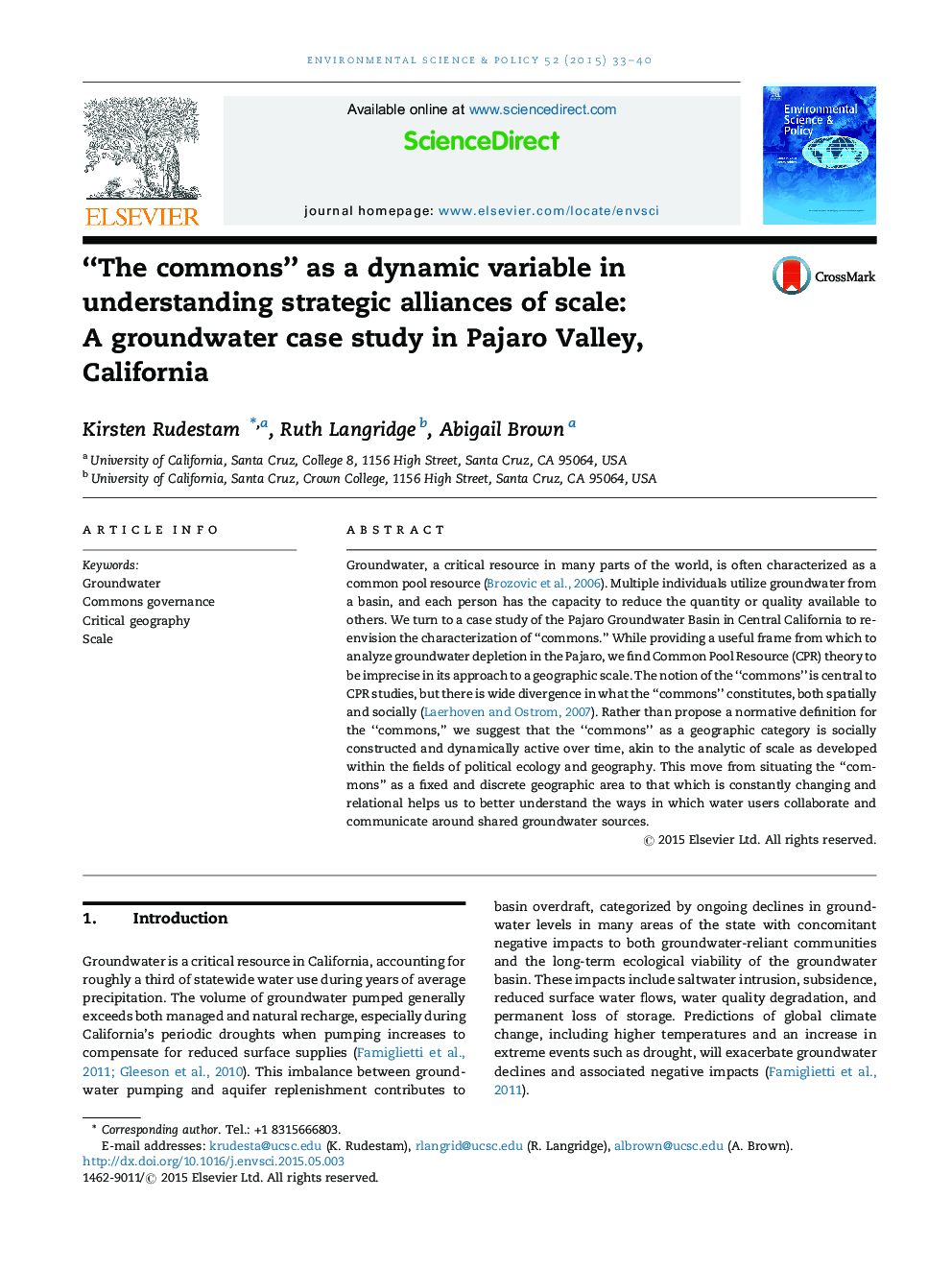| Article ID | Journal | Published Year | Pages | File Type |
|---|---|---|---|---|
| 7467173 | Environmental Science & Policy | 2015 | 8 Pages |
Abstract
Groundwater, a critical resource in many parts of the world, is often characterized as a common pool resource (Brozovic et al., 2006). Multiple individuals utilize groundwater from a basin, and each person has the capacity to reduce the quantity or quality available to others. We turn to a case study of the Pajaro Groundwater Basin in Central California to re-envision the characterization of “commons.” While providing a useful frame from which to analyze groundwater depletion in the Pajaro, we find Common Pool Resource (CPR) theory to be imprecise in its approach to a geographic scale. The notion of the “commons” is central to CPR studies, but there is wide divergence in what the “commons” constitutes, both spatially and socially (Laerhoven and Ostrom, 2007). Rather than propose a normative definition for the “commons,” we suggest that the “commons” as a geographic category is socially constructed and dynamically active over time, akin to the analytic of scale as developed within the fields of political ecology and geography. This move from situating the “commons” as a fixed and discrete geographic area to that which is constantly changing and relational helps us to better understand the ways in which water users collaborate and communicate around shared groundwater sources.
Keywords
Related Topics
Physical Sciences and Engineering
Energy
Renewable Energy, Sustainability and the Environment
Authors
Kirsten Rudestam, Ruth Langridge, Abigail Brown,
